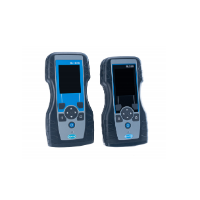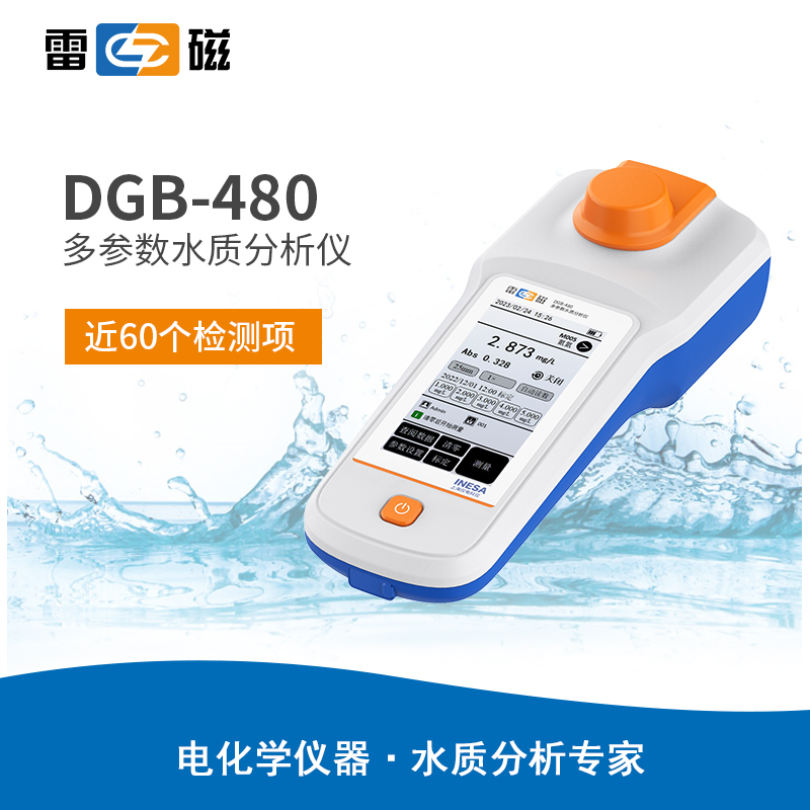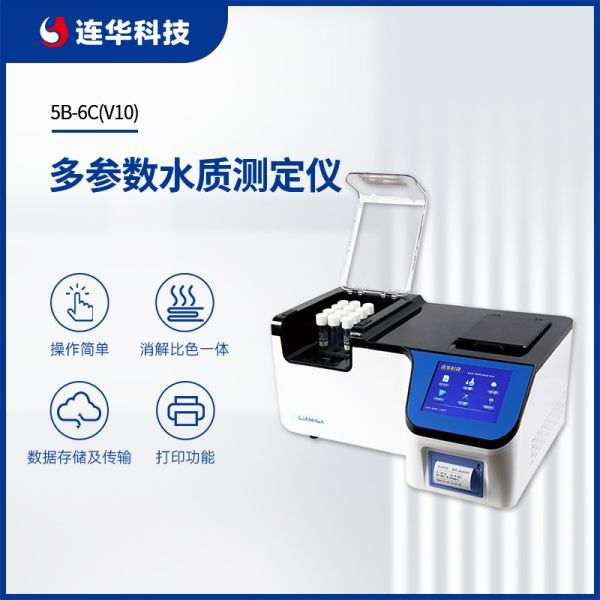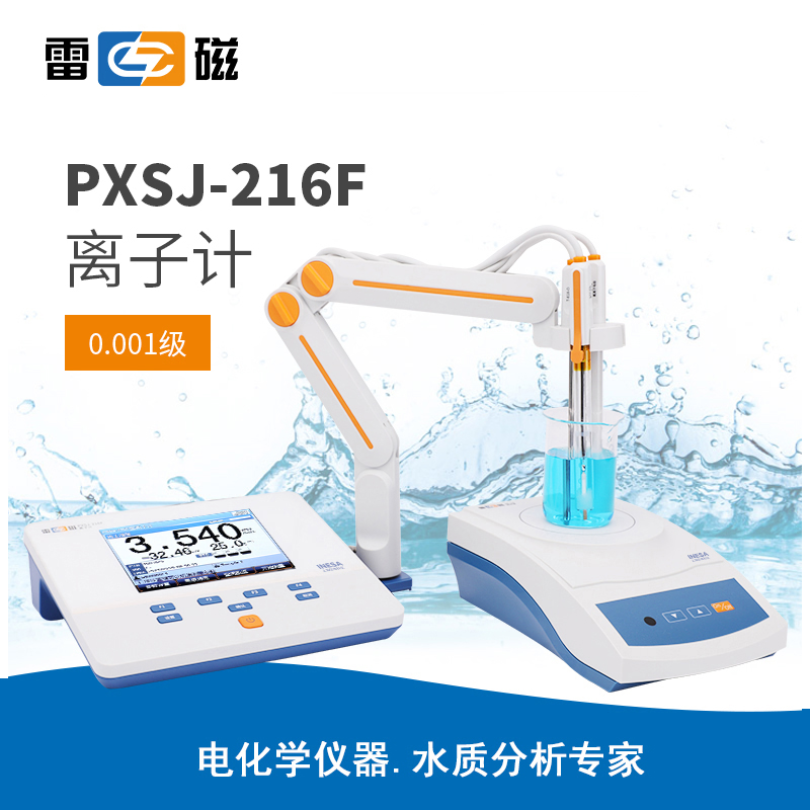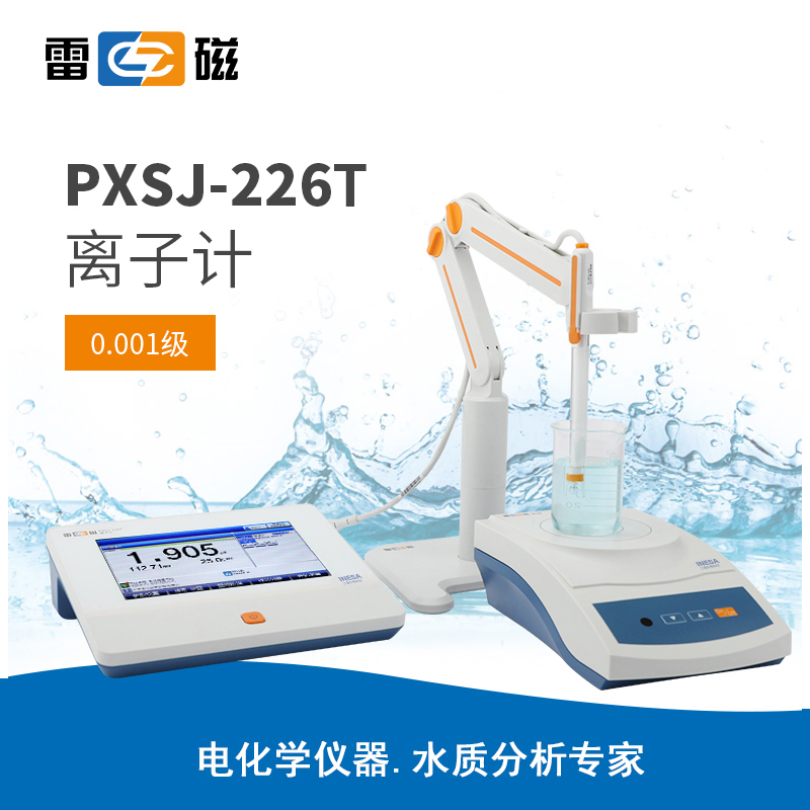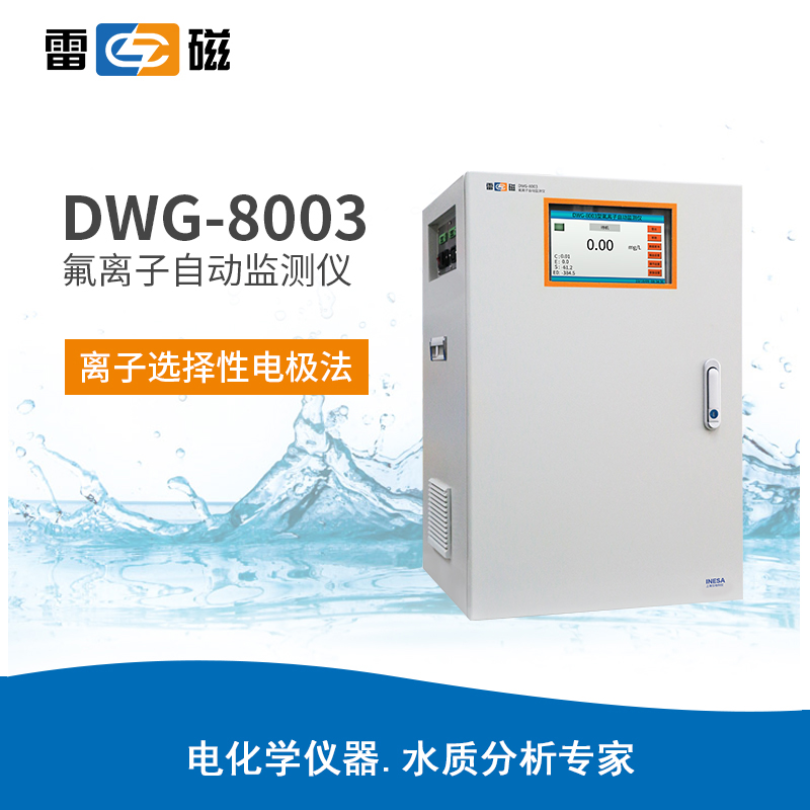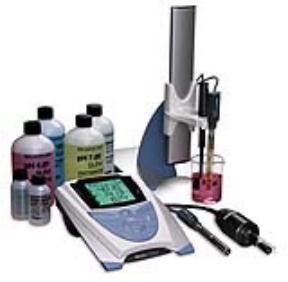
本文章详细介绍了果汁中钾离子的测定,包括校准液、水样的准备,校准和测量过程,以及电极和仪表的维护等内容。
方案详情

Potassium inFruit Juice Calibration and Analysis 1. Allow all the standards and the samples to attain room temperature for precise measurements since themeasurement is temperature sensitive. 2.Calibrate the meter using the 0.0039 %followed by the 0.039 % standard, stirring the standards at auniform rate. 3.Place the electrode and stirrer into the beaker with the 0.0039 % standard with electrode tip fullyimmersed in the solution. The stirrer should be positioned slightly below the tip of the electrode.Press the STIRRER key on the meter to turn the stirrer on. Press the CALIBRATE key. 4.Wait for a stable reading (1-2 minutes). Enter standard value of“0.0039” using UP and DOWNarrow keys and the DECIMAL/DIGIT key. 5. Press the CALIBRATE key to accept the 0.0039% standard and press the STIRRER key to turn thestirrer off. 6.Rinse electrode and stirrer thoroughly with deionized water. Gently remove excess solution from theouter sleeve of the electrode by dabbing with a clean paper tissue. Do not wipe or rub the sensingelement of the electrode. 7. Place the probes and stirrer into the beaker with the 0.039% standard such that the electrode tip isfully immersed in the solution. The stirrer should be positioned slightly below the tip of the electrode.Press the STIRRER key on the meter to turn the stirrer on. 8.Wait for stable reading (1-2 minutes). Enter standard value of“0.039”using UP and DOWN arrowkeys and the DECIMAL/DIGIT key. 9.Press the MEASURE key to accept the 0.039% standard and to move to the measure mode of themeter. Press the STIRRER key to turn the stirrer off. 10. Rinse electrode and stirrer thoroughly with deionized water. Gently remove excess solution from theouter sleeve of the electrode by dabbing with a clean paper tissue. Do not wipe or rub the sensingelement of the electrode. 11. Place the probe and stirrer in a prepared sample with the electrode tip fully immersed in the solution.Press the MEASURE key on the meter; the stirrer will turn on. The ISE:% icon will flash as themeasurement is being made. The ISE:% icon will become solid and the display value will freeze whena stable reading is achieved. This value is logged and printed automatically and the stirrer turns offautomatically. 12. Repeat steps 10 and 11 for additional samples. Upon completion of samples, rinse the electrode withdeionized water and store the electrode according to the instructions in the Electrode Storage sectionof this method note. Potassium inFruit Juice Introduction This method provides rapid, uncomplicated determinations of the potassium ion in apple juice. The directmeasurement of ions using ion selective electrodes is a well-established technique frequently used as astandard method of analysis as a quality control step and to fulfill labeling requirements. This procedureeliminates interferences associated with the presence of color and solids. Recommended Equipment Cat.No. ISE Application Package (includes all items with a Cat. No.) 1010150 1. 4-Star benchtop pH/ISE meter 1115000 2. Orion ionplus° potassium electrode 9719BNWP 3. Orion benchtop stirrer (or magnetic stir plate and bar) 096019 4. Orion benchtop electrode stand 1110001 5. 50 mL beakers 6. 50 mL graduated cylinder 7.1 mL, 2 mL and 10 mL pipettes 8.50 mL and 100 mL volumetric flasks Required Solutions Cat. No. 1. 0.1M potassium as KCl 921906 2. ISA (Ionic Strength Adjuster) for potassium electrode 931911 3.Reference Filling Solution, Optimum Results""E 900065 4.Deionized water Calibration Standard Preparation 1. To prepare a 0.039 % potassium standard, pipette 10 mL of the 0.39 % (0.1 M) potassium standardand 2 mL of the potassium ISA solution into a 100 mL volumetric flask. Dilute to the mark with thedeionized water. Mix well. 2. To prepare a 0.0039 % potassium standard pipette 10 mL of the 0.039 % potassium standard and2 mL of the potassium ISA solution into a 100 mL volumetric flask. Dilute to the mark with thedeionized water. Mix well. 3. Using a graduated cylinder, transfer 30 mL of the 0.039% standard into a beaker. 4.Using a graduated cylinder, transfer 30 mL of the 0.0039% standard into a beaker. Sample Preparation 1. Pipette 40 mL of the apple juice sample into a 200 mL volumetric flask. Add 4 mL potassium ISA to the same flask. Dilute to the mark with deionized water. Mix well. Using a graduated cylinder, measure 30 mL of the sample into a beaker. 3. Repeat for additional measurements. Results Five aliquots of diluted apple juice were measured for potassium. The data in the table below is representativeof the results expected for potassium in apple juice. Diluted Apple Juice% PotassiumSample #1:0.0199Sample # 2:0.0199Sample #3:0.0198Sample # 4:0.0199Sample #5:0.0199Mean:0.0199Standard Deviation:0.0000%CV:0.225 Note: Multiply result by 5 (dilution factor) to obtain % in undiluted apple juice. Electrode Storage For brief storage periods between sample measurements, store the electrode in the 0.0039 % (0.01 M)potassium standard. The filling solution in the potassium electrode should not be allowed to evaporate, whichcauses crystallization. For longer storage periods, refer to the electrode instruction manual. If the electrode stillis not performing well, disassemble and reassemble the electrode, taking care not to over tighten the cap. If theelectrode still does not perform as described, replace the sensing module and repeat the slope check. If the slopecheck still fails, replace the electrode handle. Equipment Setup Electrode Setup 1.Remove the electrode sensing module from the plastic vial package. Make sure both o-rings are in place onthe sensing module. Remove the electrode handle from the box. 2.Grasp the outer sleeve of the electrode handle, with the fill hole end towards the electrode cap, and gentlypush the electrode inner stem through the outer sleeve. 3.Slide the outer sleeve, spring, and cap down the electrode cable until the outer sleeve is beyond theinner stem. 4 With one hand, grasp the middle of the inner stem without touching the reference pellet. With the otherhand, screw the sensing module onto the stem until it stops and the sensing module is flush against thestem. Then tighten an additional one-quarter turn and stop. Do not over tighten. The sensing moduleshould be firmly attached to the inner stem. 5. Holding the electrode cable, slide the outer sleeve, spring and cap over the inner stem. 6 With one hand, grasp the outer sleeve; do not touch the sensing membrane. With the other hand, pull onthe cable and gently screw the cap onto the inner stem. Stop when resistance is felt. Do not over tightenor continue to turn the cap, the cap will not completely stop. If the inner body turns at all, the cap is tootight and removal of the cap and reassembly is necessary. 7.Lift the filling solution bottle’s spout to a vertical position. 8. Insert the spout into the filling hole in the outer sleeve of the electrode and add a small amount of fillingsolution to the chamber. Then tip the electrode to moisten the o-ring at the top and return electrode to avertical position. 9. Holding the electrode by the barrel with one hand, use the thumb to push down on the electrode cap,allowing a few drops of filling solution to drain wetting the inner cone. 10. Fill outer body with Optimum Result E filling solution to approximately 14 full. Release the electrode capallowing the electrode’s outer sleeve to return to its original position immediately. If the outer sleeve doesnot return to its original position immediately, check to see if the O-ring is moist and repeat steps 8-10until the outer sleeve has returned to its original position. Add more filling solution until the amount offilling solution within the electrode body is level with the bottom edge of the electrode filling hole. 11. Check the membrane surface of the sensing module to make sure it is dark and homogeneous with nobubbles on the inner surface. To ensure electrode continuity, grasp the outer sleeve and electrode cap andshake the sensing module end firmly. Meter Setup For initial meter setup, follow the steps in the Quick Reference Guide that is attached to the meter itself. TheQuick Start Guide included with each meter also contains a layout of the meter keypad for reference. Thewords in all capital letters such as POWER indicate a key on the meter, and words in quotations such as “Unit"indicate information on the meter display. 1. Connect the electrode to the meter. 2. Connect the stirrer to the meter. 3. Press the POWER key on the meter to turn meter on. 4. Note that the arrow on the left of the screen indicates the active line. If not the top line is not active, pressthe LINE SELECTION key to change the selected line to the top line. 6. Press the SETUP. Use the UP or DOWN keys to enter ISE setup. Press the LINE SELECTION key toselect the bottom line. Press UP or DOWN arrow keys to select “3”for“rES” which is an abbreviation forresolution. Press LINE SELECTION key to accept setting. .7 Press the LINE SELECTION key to select middle line, and press DOWN arrow key to select “nL In”which is an abbreviation for non-linear blank correction. 8. Press the LINE SELECTION key to select the bottom line. Press UP or DOWN arrow keys to select “off’for “nL In". Press LINE SELECTION key to accept setting. 9.Press the LINE SELECTION key to select middle line, and press DOWN arrow key to select “rAng”. 10. Press the LINE SELECTION key to select the bottom line. Press UP or DOWN arrow keys to select“HigH” for "rAng". Press LINE SELECTION key to accept setting. 11. Press the LINE SELECTION key to select middle line, and press DOWN arrow key to select “Unit".12. Press the LINE SELECTION key to select the bottom line. Press UP or DOWN arrow keys to select“PEr"(%) for “Unit”. Press LINE SELECTION key to accept setting. 13. Press the MEASURE key to return to measurement mode. If all steps were followed correctly the meter display will show three digits in the top line and “ISE: (%)” to theright of the top line. The meter and electrode are now ready for calibration. Note: The Orion Benchtop Stirrer must be turned on in General Instrument setup before analysis,please see the Quickstart guide for instructions. www.thermo.com of of fof
确定
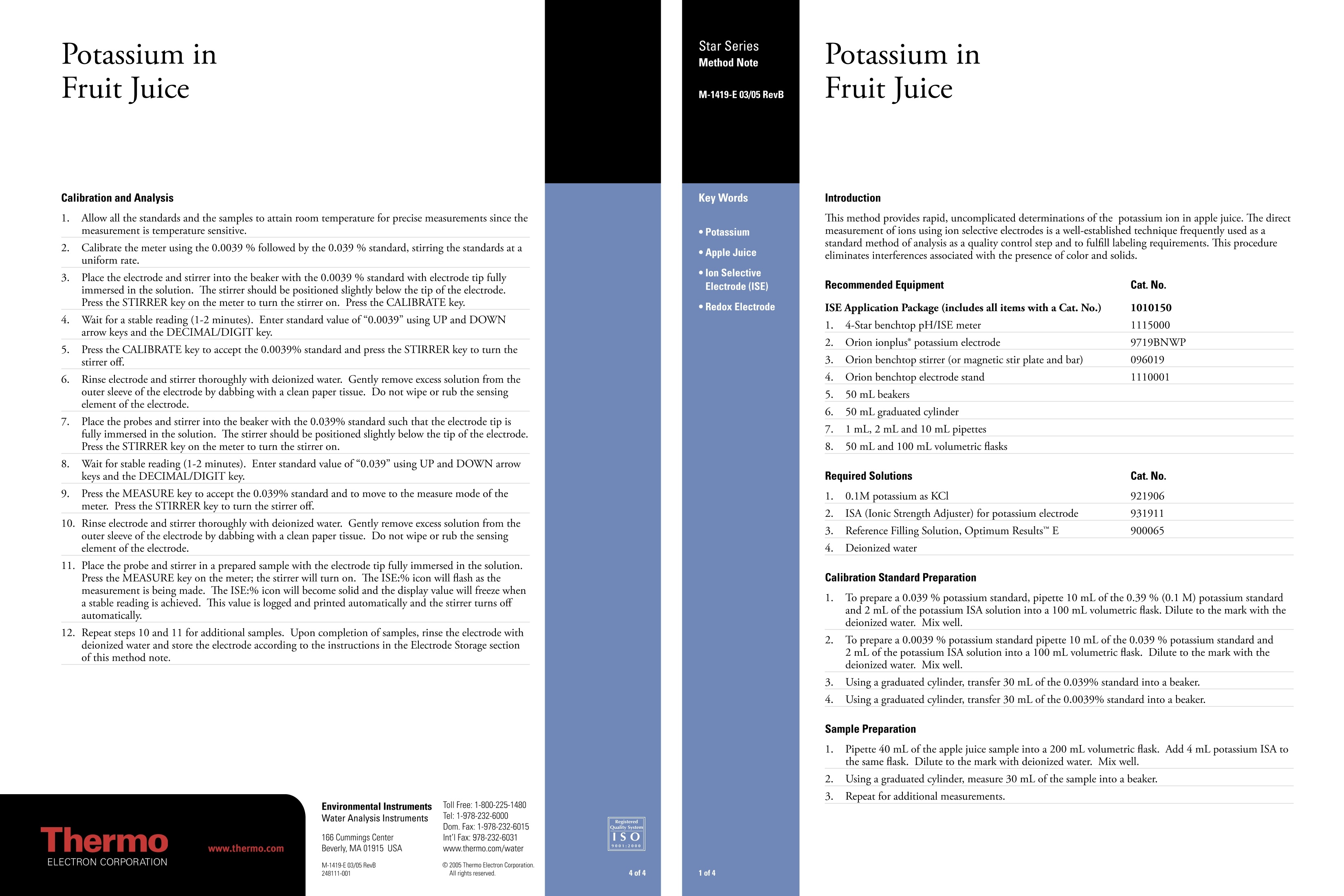
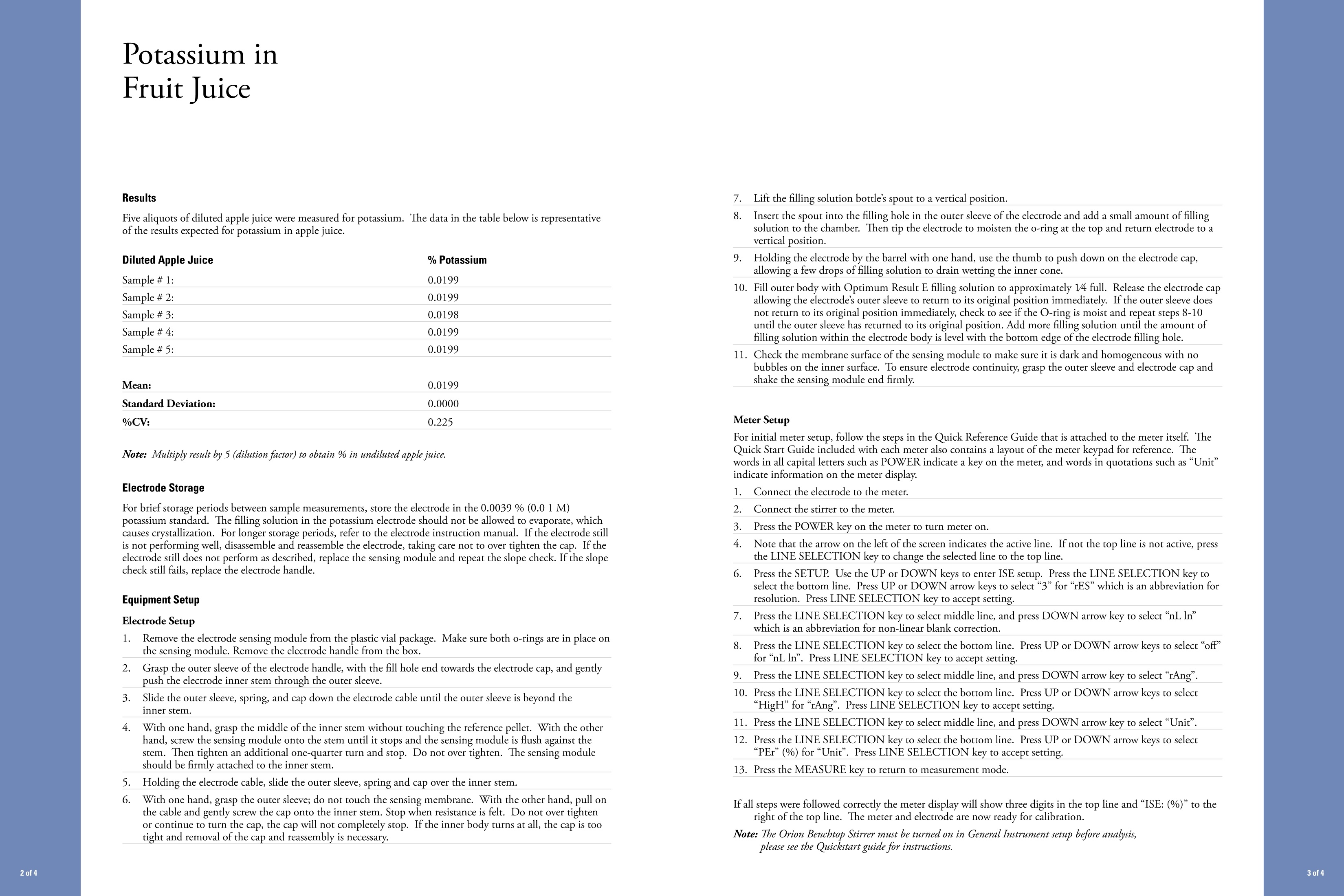
还剩1页未读,是否继续阅读?
赛默飞中国实验室产品事业部为您提供《果汁中钾离子检测方案 》,该方案主要用于果蔬汁类及其饮料中理化分析检测,参考标准--,《果汁中钾离子检测方案 》用到的仪器有台式pH/ORP/ISE/溶解氧/电导率测量仪、Orion 4-Star台式(便携式)pH/离子浓度测量仪
推荐专场
相关方案
更多
该厂商其他方案
更多












